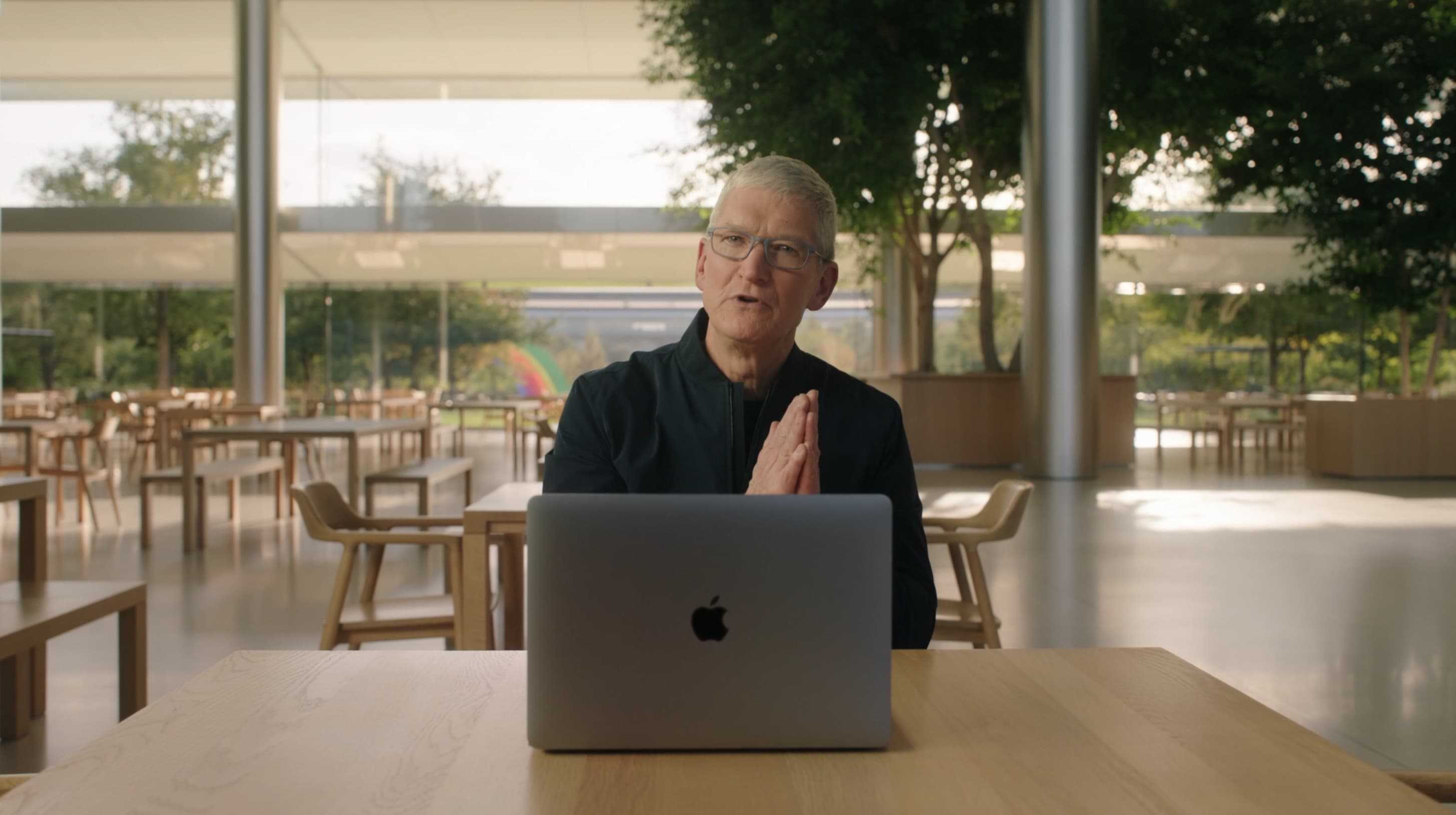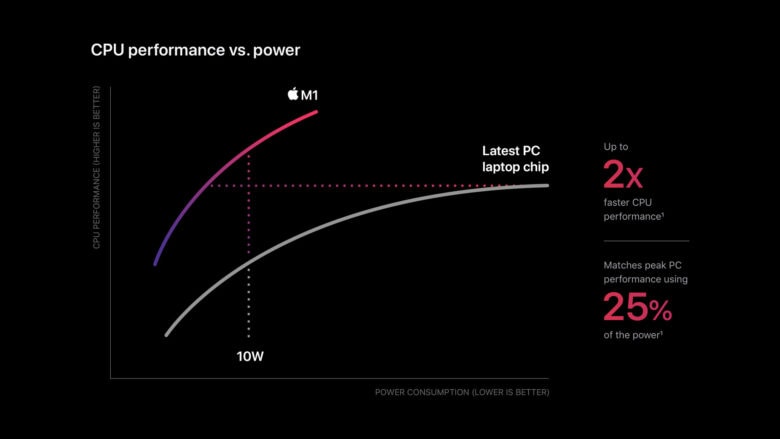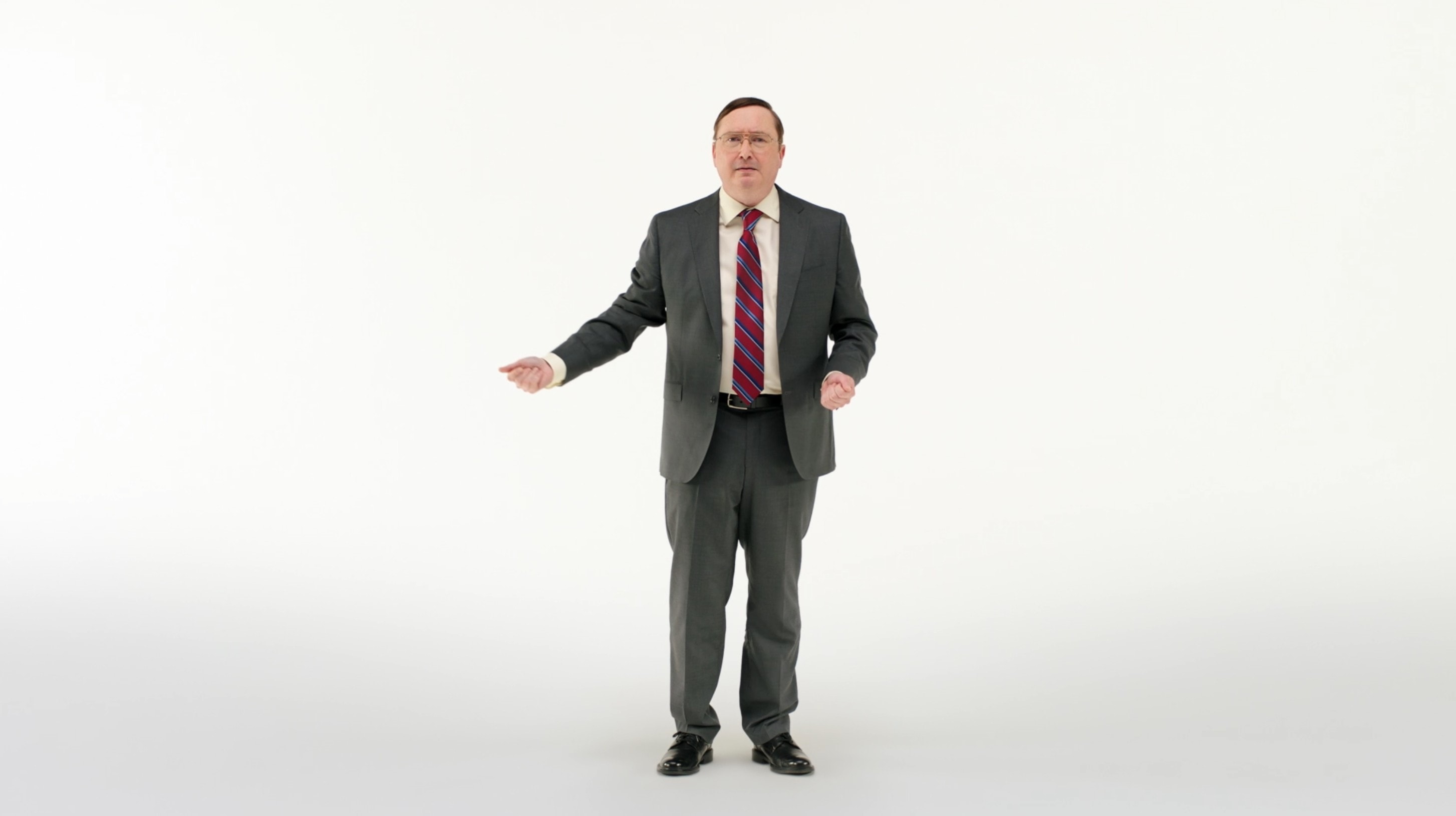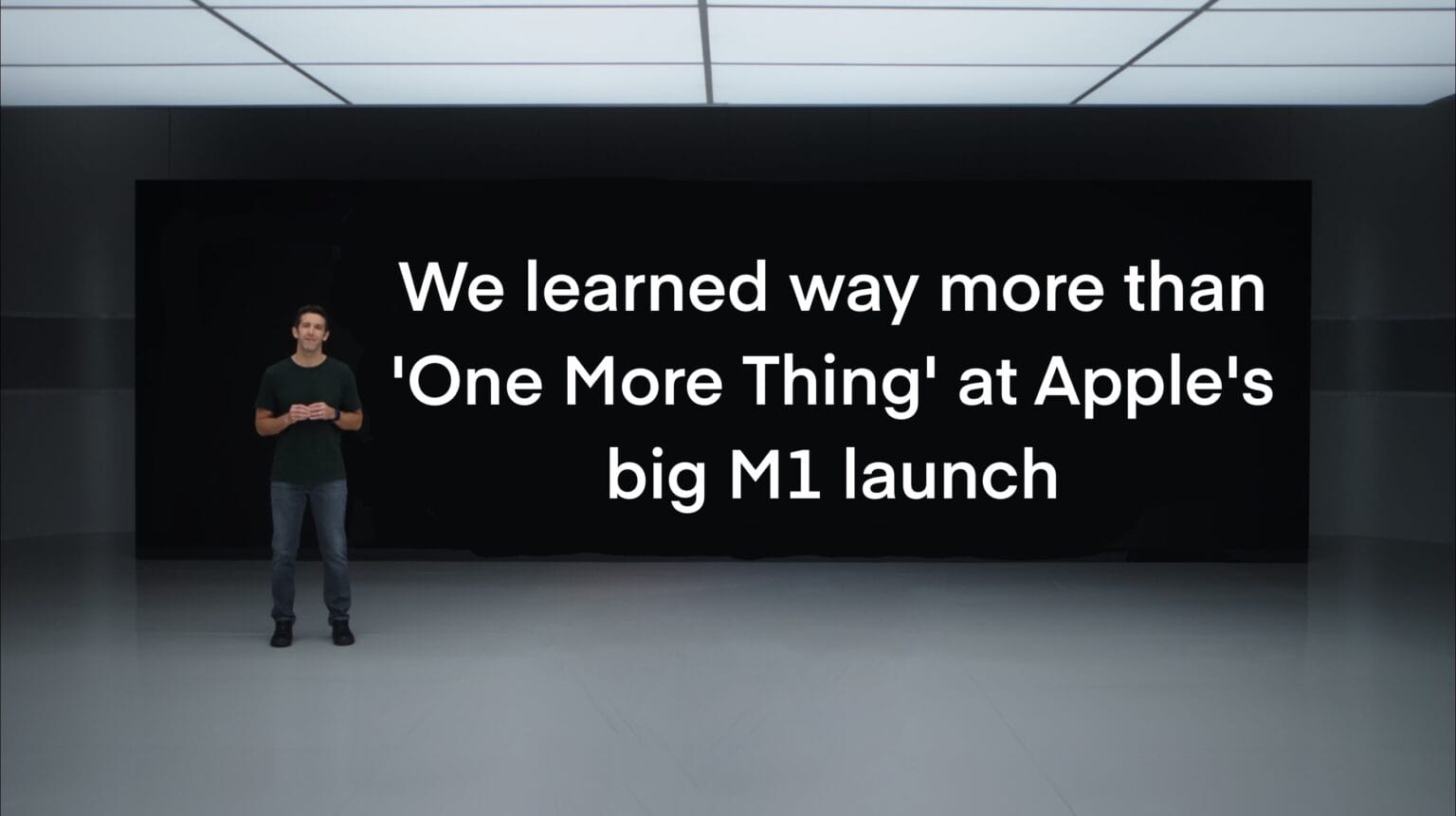Apple took a huge step in switching Macs from Intel processors to Apple Silicon on Tuesday. The M1 processor will bring big performance boosts to a trio of new Macs.
Here’s a rundown of not only what Apple CEO Tim Cook and Co. said during the “One More Thing” event, but what the announcements mean for the future of the Mac — and the company.
Apple makes good on its commitment to Mac

Photo: Apple
In recent years, some people questioned Apple’s commitment to the Mac. With Tuesday’s event, the company boldly refuted such thinking.
“We love the Mac,” Cook said in his opening remarks. “It’s in our DNA.”
By focusing the “One More Thing” event solely on the Mac, Apple offered up substantial proof of its commitment to the platform. The switch to Apple Silicon is a risky gamble for Cupertino, but Apple execs made a strong case for the move.
Starting with the M1 chip unveiled Tuesday, Apple says it’s doubling down on innovation even as the Mac experiences what Cook called “its best year ever.”
At the entirely Mac-focused event, the company launched three different computers powered by the M1 chip: a MacBook Air, a Mac mini and a MacBook Pro. In doing so, it over-delivered on its commitment to Apple Silicon-powered Macs.
“The Mac has always been about innovation and bold change,” Cook said. “In June we announced that the Mac is taking another huge leap forward by transitioning to Apple Silicon. And we promised that the first Mac with Apple Silicon would arrive by the end of this year. Well that day is here.”
Take that, doubters. — Lewis Wallace
M1 Macs deliver the impossible: Performance and battery life
All laptops do a delicate dance as computer-makers weigh the tradeoffs between performance and battery life. With its new M1 chip, Apple thinks it’s threaded the needle.
“M1 has been optimized for our most popular low-power systems, where small size and power efficiency are critically important,” said John Ternus, Apple’s vice president of hardware engineering, as he took the wraps off the first Apple Silicon chip for Macs. “It is a stunningly capable chip, and it ushers in a whole new era for the Mac.”
And the advances Apple claims are coming next week when these new products land sound truly mind-boggling. The performance enhancements coming to MacBook Air and MacBook Pro sound amazing. Couple that with the extended battery life Apple promises, and it all starts to sound almost unbelievable.
If Apple pulls it off, it will be a master stroke. These new laptops, at price points just like their predecessors, sound like they deliver the impossible: screaming performance that lasts more than your typical work day. — Lewis Wallace
Apple is ready to go head-to-head with PCs again

Chart: Apple
More than a decade ago, announcing a new Mac often included a slide showing how much quicker it was than a PC. That ended when Apple switched to Intel chips. With Macs and PCs using the same processors, the Mac wasn’t any faster.
But that sort of performance oneupmanship came back with a vengeance during the M1 launch event. Johny Srouji, Apple’s senior vice president of hardware technologies, pulled up a chart laying out that the Apple M1 offers 2x better CPU performance than PCs — and uses 25% less power when doing so. Expect a similar chart to appear with each new Mac release.
With the debut of the M2, M3, etc., Apple Silicon is apparently poised to blow Intel out of the water, and that’s something Cupertino wants everyone to know. — Ed Hardy
Apple wasn’t feeling too innovative
The Apple Silicon processors in iPad and iPhone don’t need fans, and require far less power that Intel ones. This led to predictions of sleek new hardware built around these chips. Something as amazing as the original MacBook Air was in its day.
That is not what happened. Instead, the new Apple M1 processor went into a MacBook Air and a MacBook Pro nearly indistinguishable from their predecessors.
Admittedly, there are advantages to Apple taking this route. Not slimming down the notebooks left plenty of room for batteries. That’s one reason the new MacBook Pro promises nearly double the battery life of its Intel-based predecessor, as noted above.
Maybe the rumored radical redesigns will come later. Time will tell. — Ed Hardy
Apple Silicon Macs play nice with any software
Apple tried to sooth the nerves of M1 Mac users about software availability. The Mac-maker doesn’t want potential customers concerned that their new computer won’t be able to run their favorite applications.
Tuesday’s event included a demo of Rosetta 2 in macOS Big Sur, a tool that allows software written for Intel-based Macs to run on computers running Apple Silicon. Apple promised a seamless experience, and one that’s speedy enough to handle games. Craig Federighi, Apple’s SVP of software engineering, even went so far as to promise that Macs running Apple’s M1 processor can run some Intel applications faster than Intel-based Macs can.
Long-term, however, Apple wants third-party Mac software developers to port their products from Intel to M1. And Cupertino will surely continue to spread the word whenever a widely used Mac app is brought to M1. — Ed Hardy
Apple keeps upping its keynote game

Photo: Apple
We’ve been somewhat in awe of this year’s virtual Apple keynotes, but the “One More Thing” event took things up a notch. Filled once again with slick, cinematic transitions that took us on a fanciful virtual tour of Apple’s spaceship HQ, Tuesday’s presentation focused solely on Apple Silicon Macs.
During the zippy 49-minute event, Apple blasted out a ton of specs, but delivered a single, emphatic message — new Macs will be better than ever — quite effectively. And the company also delivered a few welcome surprises.
First, the execs hit us with a deep, convincing dive into the powerful new M1 chip. Then we found out how macOS Big Sur will enable software written for Intel chips to run on the new M1-powered Macs — sometimes even faster than running natively.
And then Apple delivered not two but three new Macs powered by Apple Silicon. We expected the MacBooks, but the new Mac mini came as a surprise. (So did the lack of the long-rumored AirTags, frankly, but that’s another story.)
Finally, Apple swiped a move from Marvel Studios’ successful playbook. In a funny post-show scene, John Hodgman — the original “PC guy” from Apple’s classic Mac ads — appeared on a white screen to pooh-pooh the new Macs’ astonishing new features. Well-played, Apple. Well-played.
Apple’s team is getting so good at this game, we can’t wait to see the next virtual event. — Lewis Wallace


